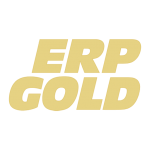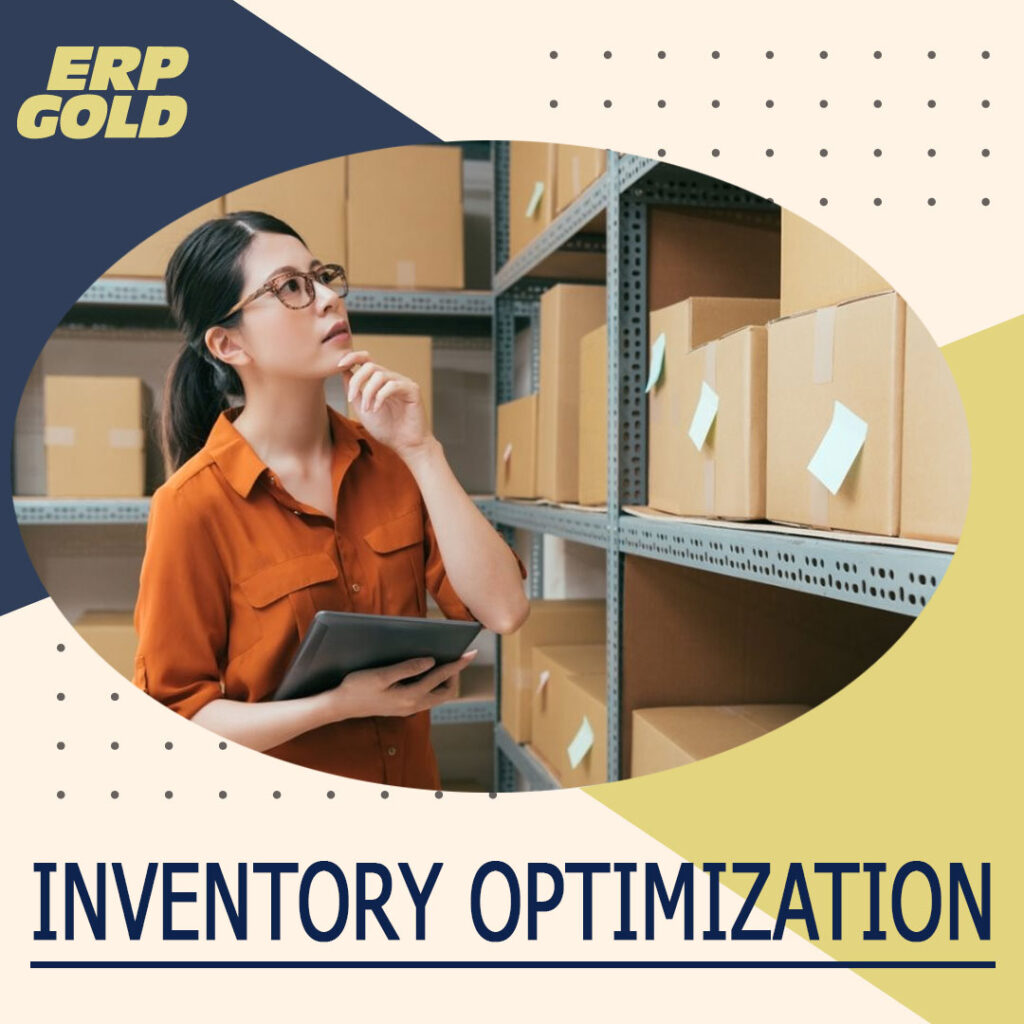What is Inventory?
To optimize your inventory, you need to understand what is included in the inventory. Inventory is comprised of raw materials, work-in-process, finished goods, and MRO (maintenance, repair, and operational) items and everything else you offer to clients. Inventory control is the process of ensuring the appropriate amounts of stock are maintained by a business, to be able to meet customer demand without delay while keeping the costs associated with holding stock to a minimum.
Difference between Inventory Optimization and Inventory Management
- Inventory Optimization
Inventory optimization is a process that focuses on identifying inventory levels to fulfill client demands keeping in mind the lowest cost by providing expected service with minimum logistic cost. As a result, inventory optimization aims to predict demand as accurately as possible and maximize the company’s financial output from inventory.
- Inventory Management
Inventory Management refers to a systematic process of ordering, receiving, and tracking inventory within the walls of the organization’s facility. The purpose of inventory management is to maintain the required inventory to ensure the productivity and efficiency targets are attainable.
How is inventory optimized?
Supply chain inventory optimization is defined as a method of balancing a large number of item numbers or SKUs with predetermined service-level targets while accounting for all demand and supply fluctuation. Simply put, it is maintaining the right amount of inventory, so you are meeting customer demand while minimizing cost and maintaining efficiencies.
Inventory optimization is considered the next level of inventory management by warehouse and supply chain managers. As a result, business leaders are looking to companies like ERP Gold to get real-time inventory information to make the necessary decisions for both supply and demand changes.
With supply chain inventory optimization, manufacturers can resolve warehouse management and stocking issues. According to studies, incorrect packing, storing, or securing in freight containers causes roughly 65 percent of inventory damage. To a large extent, inventory optimization can aid in the resolution of these issues.
In 2023, the cost of out-of-stock items is estimated to be $1.77 Trillion, while over-stocking cost more than $562 billion. With accurate Inventory Optimization, manufacturers may leverage predictive analytics and data-driven insights to streamline stocking difficulties.
Below are the factors that must be taken into consideration for inventory optimization.
- Demand forecasting accuracy
Forecasting is critical for supply chain inventory optimization. Depending on the sort of products or services involved, the product life cycle, and the industry being served, demand and supply chain forecasting can be done in a variety of approaches. Using demand statistics from the preceding year or period, as well as exact request estimations from sales teams, could be one option. Manufacturers and wholesalers must have a thorough understanding of the unique product lifecycle to properly anticipate demand and establish where those SKUs are in the lifecycle. Both manufacturers and wholesalers must keep track of seasonality patterns and new product launches, both of which can affect demand projection estimates.
2. An Inventory Management Strategy
In order to create a strategy, it is critical to understand which products must be delivered, in what amounts, and at what intervals. For example, ABC analysis is an excellent technique for stocking SKU amounts, because it divides SKUs based on their annual consumption value. It also helps you understand safety stock calculations so you can manage unanticipated demand changes, supplier variances, or other disruptions. With any strategy, you must assess the amount of space you have and what you need to have in order to deliver your product in the appropriate quantities at the appropriate times, both within your facility and your customer’s door.
3. Supplier Evaluation
The final factor to consider in your inventory optimization plan is your suppliers. It is crucial to understand the various lead times from your suppliers so you can stay on top of your on-hand quantities and when they need to be reordered, as well as create the order. It is also just as critical to evaluate supplier capabilities and capacity. Are they able to run ad hoc orders if there is a spike in demand? Do you need to have a second / backup supplier in order to meet your orders? Additionally, manufacturers and wholesalers must keep track of all goods in transit, not just those in stock at the warehouse. ERP systems, like ERP Gold’s inventory management software can help with your safety stock and reorder points and alert you when those orders need to be placed.
Obstacles in Inventory Optimization Process
As with any optimization strategy, there are also obstacles to overcome. Sales forecasting is tough to achieve efficiently with altering demand cycles, thus this is a top concern. The accuracy of the sales prediction and the accuracy of the inventory levels are inextricably linked.
- A paper inventory management system
Managing your inventory on paper has become increasingly difficult. The ability to quickly react to changes in demand necessitates the need for a real-time inventory system such as ERP Gold
- Multi-channel sales challenge
The way customers buy inventory has drastically changed. You may or may not have a brick-and-mortar store, and you may or may not sell directly to your customers. Given all the scenarios in online and offline shopping, each channel operates differently and has different KPI targets, so creating ideal inventory levels to meet all of this could be a challenge.
- Dead stock
Dead stock is items that can’t be sold because they’re irrelevant, out of style, or no longer, and carrying dead stock is expensive. Your inventory optimization efforts need to include strategies for getting rid of the dead stock. If you are keeping dead stock for long periods of time (usually more than a year) it will have an impact on future purchases of similar items, making inventory management more difficult.
- Inadequate monitoring of performance
Because the environment is consistently changing, a company needs real-time accurate inventory reporting. The reporting needs to measures both tangibles and intangibles inventory optimization initiatives. Without reporting, you are treating symptoms not the actual problem.
Best Practices for Inventory Optimization in Small Business
1: Centralize your inventory control
When it comes to inventory optimization, having all your inventory on one platform and in real-time is a significant advantage. This allows you to respond to issues quicker and more effectively.
2: Demand Forecasting
As we learned earlier, demand forecasting is critical to your business. Having the correct mix of products, available at the right time is what makes your business and keeps your customers coming back.
3: Establishing Realistic Goals and Targets
In order to determine if your inventory optimization is working, you have to have realistic goals and targets for all the components of your inventory. You need safety stock goals, re-order points, and dead stock elimination plans, etc. You won’t know if your optimization is effective if you don’t have something to check it against.
4: Continuous Audits
The final piece is continuous audits. You need to determine the appropriate timeframe for the audits and the order in which they need to be done. Just like cycle counting your inventory to make sure it is accurate, you need to make certain all the other points of your optimization strategy are working. For example, the reorder purchase orders are going out and you are receiving the inventory in the lead time expected. Or you forecasted a 10% increase in demand over the next 3 months, is the increase more or less than projected?
Why Do Small Businesses Need to be Using Inventory Optimization Software
The basic goal of inventory optimization is to ensure that the right inventory is available in the right quantity, at the right time, and at the right price. With effective Inventory Control Optimization Software, manufacturers and wholesalers can achieve that goal and much more:
- Gain real-time visibility into inventory levels and order tracking status to increase customer satisfaction and boost performance throughout the sales process.
- Recognize that optimizing warehouse inventory levels can reduce operational and inventory costs. This can help a business enhance its performance by allowing it to become more lean and profitable.
- Improve your work’s quality by getting it right the first time. By preventing needless reorders caused by erroneous information about what stock is currently on hand, increases overall operational excellence and reduces inventory expenditure.
- Boost productivity by analyzing data and reports to better understand product variability and make better strategic and operational decisions.
ERP Gold is a complete and integrated suite for managing your business. Whether you are a manufacturer, wholesaler, or e-commerce retailer, we help you manage all aspects of your business from sales, and purchase to production, delivery, and even returns of products in real-time with greater accuracy and efficiency. ERP Gold is here to help you with all your inventory management and control issues! Click HERE to read more about how we can help, call us at 888.334.4472 for a free consultation. If you want us to call you, fill out our contact form HERE. Or click HERE to schedule a free consultation or demonstration of how we can help you.

